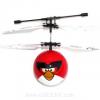- 2 replies
- 2,197 views
- Add Reply
- 11 replies
- 3,961 views
- Add Reply
- 1 reply
- 1,634 views
- Add Reply
- 2 replies
- 1,651 views
- Add Reply
- 10 replies
- 2,866 views
- Add Reply
Multiple search in satellite catalogs

By intertronic,
Hi all,
does anyone knows a software (or alternatively an internet site)
where you can search on multiple commercial satellite imagery catalogs?
for example if i need a sat image of an area, for a particular date,
how can i search in Airbus, DigitalGlobe, Deimos, Kari,
and other commercial imagery providers in just one step?
thanks
A general guide for building drones or UAV's

By Arhanghelul,

Hello members of GIS AREA !
Drones, also named UAV's or UAS's, are becoming increasingly popular for different applications.
Me, I am interested in the field on drones applications for remote sensing, more exactly for aerial mapping, to produce orthophotos, Digital Terrain Models (DEM) and other products which are very useful for research or private businesses.
I would like to know more about how to build a personal drone from 0, how to selected the best platform for the application of
Elements of Projection
By mwin002,
Hi All
Can someone please tell me what
"Scale Error" is as an element of projection
and also
what "Grid Scale Constant" is as an element of projection
Any help would be appreciated
cheers
Mat
How the postgreSQL/postGIS database implemented OGC standards?

By adel.naseri,
For one work I needed to understand How the postgreSQL/postGIS database implemented OGC standards...
Can anyone answer this question with examples of this implementation or suggest me to a good reference in this context?
thanks
Open Source UAV Post Processing Solution

By Lurker,
Hello, UAV recently gain huge popularity,
We could find low cost UAV too (we have a recent project using custom fix wing drone that only cost approx under 5000 dollar), but how bout low cost or even free post processing software ?
I find this interesting articles and tutorials :
http://flightriot.com/tutorials/post-processing/
using open source software like Meshlab, CMPMVS, VisualSFM, and such
but, anyone in here have the experience with above method?
share your thought
-
Forum Statistics
8.7k
Total Topics43.4k
Total Posts





